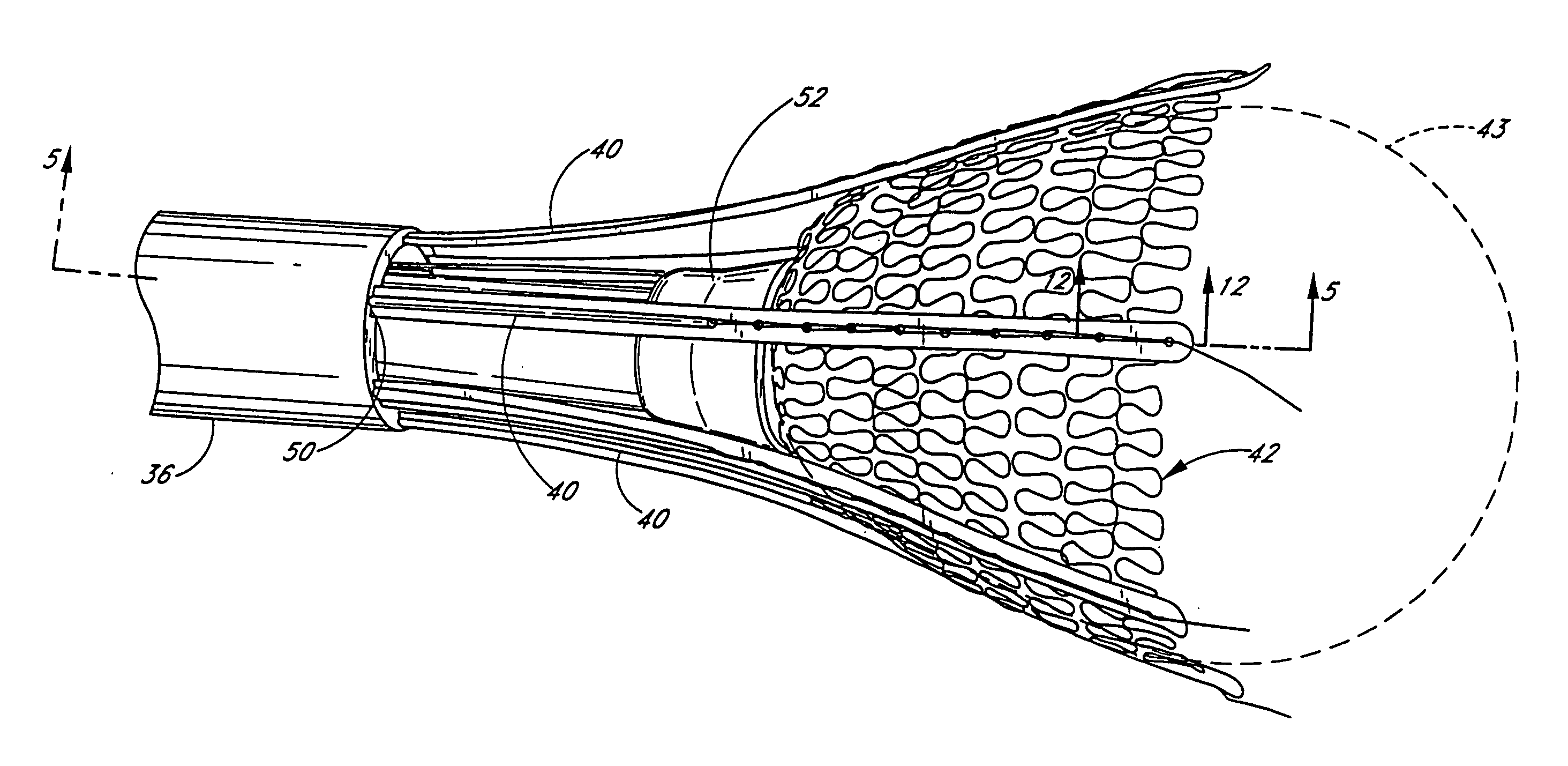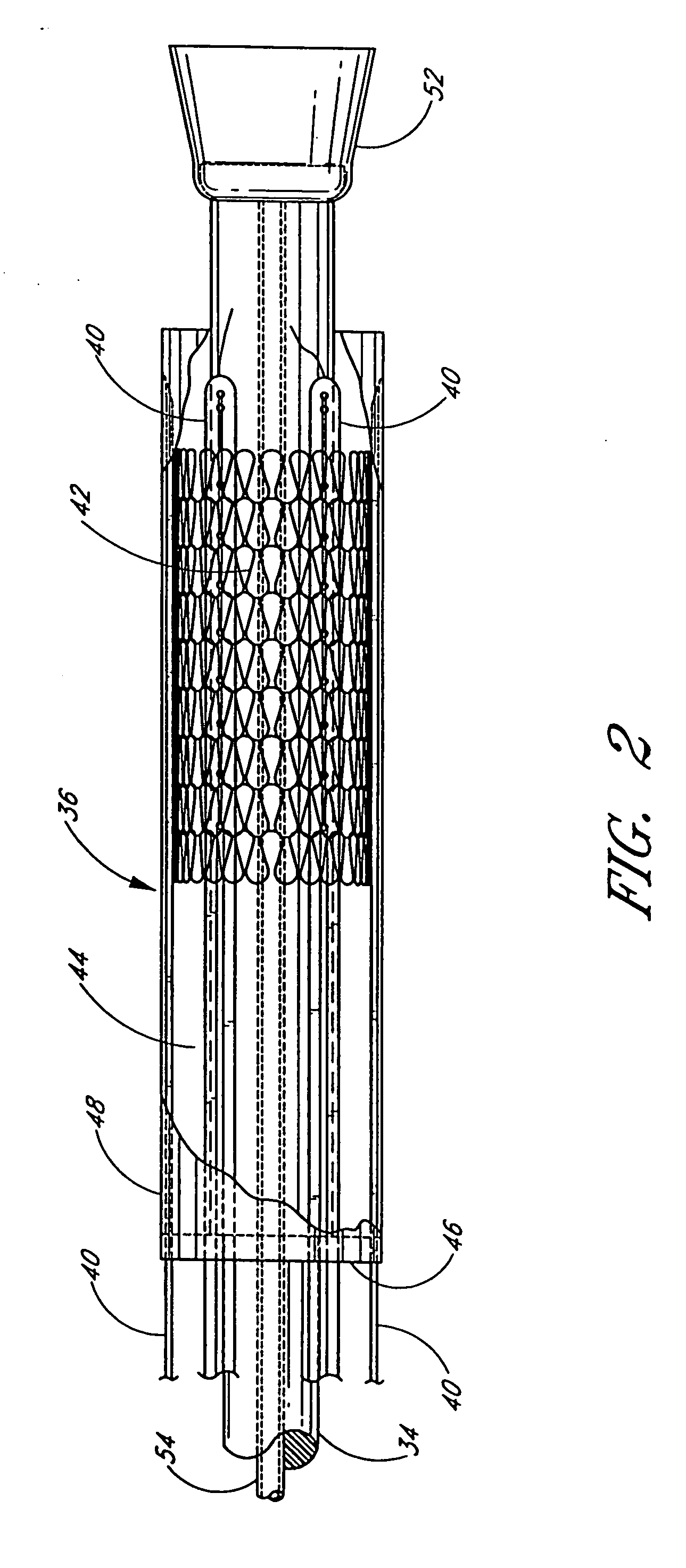Cardiac harness delivery device and method of use
a delivery device and cardiac harness technology, applied in the field of cardiac harness delivery devices and methods, can solve the problems of difficult minimally invasive deployment of cardiac harnesses, and achieve the effect of reducing the effectiveness of predetermined bends and eliminating the possibility of distal ends flattening during storag
- Summary
- Abstract
- Description
- Claims
- Application Information
AI Technical Summary
Benefits of technology
Problems solved by technology
Method used
Image
Examples
Embodiment Construction
[0078]FIGS. 1-11 illustrate a preferred embodiment of a cardiac harness delivery device, which is generally referred to by the reference numeral 30. In a preferred embodiment, the delivery device 30 is configured to releasably support a cardiac reinforcement device (CRD), such as a cardiac harness, and assist in the advancement of the cardiac harness over the heart of a patient. Once the cardiac harness is positioned on the heart, the delivery device 30 preferably is configured to release the harness and be retractable without causing undesired shifting of the cardiac harness relative to the heart.
[0079] In the illustrated arrangement, the delivery device 30 permits delivery of a cardiac harness in a minimally invasive manner. That is, preferably the device 30 permits accurate delivery, positioning, and release of the cardiac harness through a relatively small incision in a patient. However, the preferred, or alternative, embodiments of the delivery device 30 may also be used to de...
PUM
 Login to View More
Login to View More Abstract
Description
Claims
Application Information
 Login to View More
Login to View More - R&D
- Intellectual Property
- Life Sciences
- Materials
- Tech Scout
- Unparalleled Data Quality
- Higher Quality Content
- 60% Fewer Hallucinations
Browse by: Latest US Patents, China's latest patents, Technical Efficacy Thesaurus, Application Domain, Technology Topic, Popular Technical Reports.
© 2025 PatSnap. All rights reserved.Legal|Privacy policy|Modern Slavery Act Transparency Statement|Sitemap|About US| Contact US: help@patsnap.com



